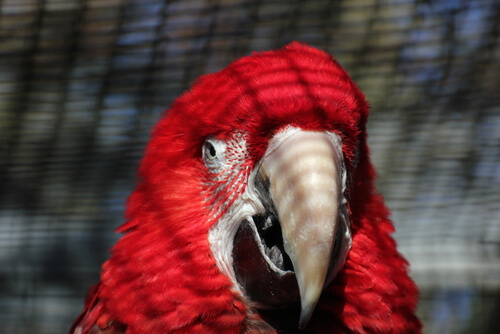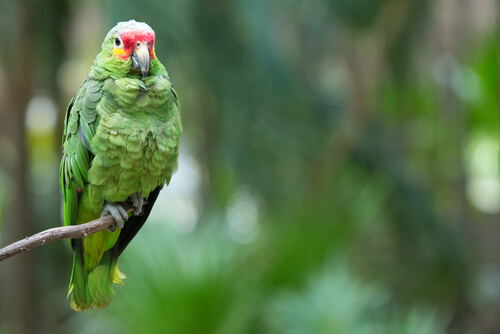Depression in Parrots: Causes, Symptoms and Treatments

The slightest change in dynamics could be enough to cause considerable anxiety in parrots. Usually out of ignorance, people with birds put them in stressful situations.
Read on to learn more. There are many causes of depression in parrots, only a few symptoms, and a very limited range of treatments.
3 Causes of Depression in Parrots
Parrots may suffer from separation anxiety. They get very attached to those around them. If a parrot’s partner dies or if they’re abandoned, they’ll likely stop eating. Removing them from their natural environment can be lethal.
But the reasons for depression in parrots are not related solely to attachment. Trauma is another cause. Even just hearing a loud noise stresses them, and the shock causes issues in their nervous systems.

Other causes have to do with their interactions with the outside world. If they are subjected to extremely cold environments, sudden wind currents or very narrow cages, they may feel confined and get depressed.
Symptoms of Depression in Parrots
Repetitive, meaningless behaviors, as well as loss of appetite, are all clear signs that a parrot is not well emotionally. It will begin refusing food altogether, which can be serious and even life-threatening.
A simple flutter of a parrot’s wings could be cry for attention. Owners should take this as an initial warning sign of possible early depression.
When a psychological problem progresses, parrots may begin plucking their feathers in an act of self-harm. They may end up with no feathers at all, which will make them vulnerable and make the situation even worse.
The Minds of Parrots
Parrots are remarkably intelligent. They have the ability to understand many things in their environment. In fact, some researchers estimate that parrots are about as intelligent as small children.
In addition, the species tends to be faithful to their mates. Once two parrots come together, they often stay together until death, even in the wild. Apparently, for parrots, permanence and attachment are very important to their survival and emotional peace.
All of this is connected to their instincts and chemical composition. One final point is that parrots have very fast metabolisms. So when they stop eating, it can cause irreparable damage in a very short period of time.
What You Should Know Before Adopting a Parrot
The worst thing a human can do is to adopt an adult parrot. Stores often only sell them once they’re older, and when they move to their new homes, they get depressed.
But even when you get a parrot at fairly young age, be very careful and create a pleasant environment for it. Make sure the room temperature is comfortable and their cage is spacious.
Lastly, pay attention to your parrot’s body language. Just because they’re always talking or singing, it doesn’t necessarily mean that they’re happy.

Treatment for Depression in Parrots
Treatment involves creating conditions that will foster positive, healthy feelings. Taking your parrot out on regular excursions is an excellent way to keep them distracted.
There is a lot of information on the internet about antidepressants, such as Prozac, for depression in parrots. However, contact a trusted veterinarian to get recommendations for treatments specific to your pet.
To conclude, don’t forget that the best way to prevent and treat depression in parrots is with love and good communication.
All cited sources were thoroughly reviewed by our team to ensure their quality, reliability, currency, and validity. The bibliography of this article was considered reliable and of academic or scientific accuracy.
- Shivaprasad, H. (2014) Patología de las aves. Una revisión. Curso de Sanidad Avícola. Recuperado el 25 de marzo de 2022, disponible en: https://www.asav.es/wp-content/uploads/2016/05/3-1-Patologia-de-las-aves-una-revision-Shivaprasad.pdf
- DE LA PEÑA, M. R. (1980). Manual de enfermedades de las aves. Colmegna.
This text is provided for informational purposes only and does not replace consultation with a professional. If in doubt, consult your specialist.